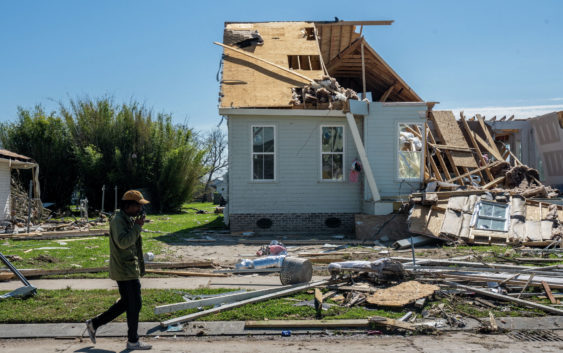- WATCH: Video Shows Confirmed Tornado touches down in Columbus County
- Residents begin clean up after storms, apparent tornado roll through NC Tuesday
- NC State researchers find increased fecal contamination in coastal waters due to sunny day flooding
- Flooding lingers in Liberty County neighborhoods near Trinity River with more rainfall expected
- North Carolina behind on hurricane preparedness, study shows
Tornado Alley shifting toward East Texas and Southeast U.S., experts say

Tornado Alley may be shifting from the Great Plains of the Midwest to the Mississippi River valley, according to an article from AccuWeather. Tornado Alley typically refers to the geographic location believed to be where tornadoes most frequently occur, the article said. This area includes West and North Texas, as well as Oklahoma, Kansas, Nebraska, South Dakota and parts of Colorado and New Mexico.
Where tornadoes occur most frequently has moved to the Southeast U.S. in the past few decades, though, the article said. This new “Tornado Alley” consists of Eastern Texas and Oklahoma, as well as Arkansas, Mississippi, Alabama, Tennessee and parts of Kentucky, Indiana, Illinois and Missouri.
“When you look at the trends in where tornadoes have occurred in recent years, it’s very clear that there have been more tornadoes farther south and farther east away from what people have typically known as the Tornado Alley across the Plains,” AccuWeather Chief Meteorologist Jonathan Porter said in the article.
There are many reasons for this shift to the Southeastern U.S., Brian Curren, Science and Operations Officer for National Weather Service Midland/Odessa, said in a statement. Greater exposure due to increased population density, technology to detect tornadoes better and tropical storms along the coastline have increased the number of tornadoes in this region of the country, Curren said.
Droughts in the Midwest also play a role in Tornado Alley’s geographical shift, Curren said. However, he said due to the nature of droughts, the shift might not be permanent.
“Droughts are cyclical, and it’s quite possible that we will see a westward shift in tornadic activity once this cycle changes, hopefully sooner rather than later,” Curren said in the statement.
The AccuWeather article also acknowledged that the shift in Tornado Alley may only be temporary. Additionally, AccuWeather Senior Weather Editor Jesse Ferrell said tornadoes are not unique to a specific geographical area defined as “Tornado Alley.”
“People just need to realize that tornadoes can occur outside of these areas, and although the area has shifted in the last 35 years from the Plains to the Southeast, it may shift again,” Ferrell said.
The article explained that over the last 20 years, long-lived tornadoes were occurring more frequently in the Mississippi River valley than in the traditional Tornado Alley. Additionally, the article said the number of tornado days increased in the Southeastern U.S., while that number decreased for Tornado Alley in the same time period.
It is important to define what area is considered Tornado Alley, especially since that area has shifted to the Southeast where the population density is higher, the article said. For example, the article said parts of western Oklahoma and Kansas have population densities of less than one-tenth of a person per square kilometer, while in rural parts of Alabama the population density can be 10 people per square kilometer.
“So you can put a tornado over western Oklahoma for a considerable distance and basically hit nothing or very little,” said Harold Brooks, a senior research scientist at the National Oceanic and Atmospheric Administration. “You cannot do that in the mid-South and Southeast, any tornado that is on the ground for more than a few miles will hit structures.”
More Weather